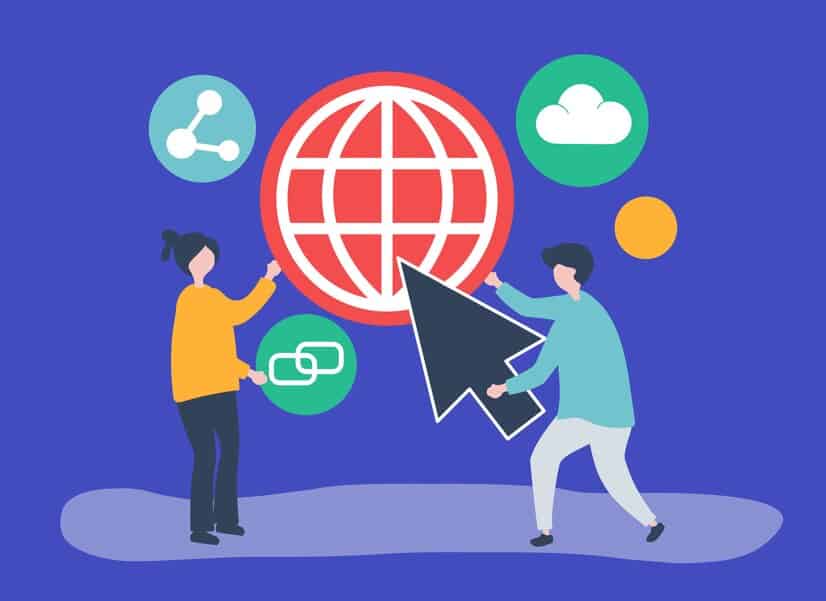
In today’s fast-paced digital world, companies are constantly looking for ways to improve efficiency and communication among their employees. With the rise of deskless workforces, this need has become even more crucial. Many organizations struggle with finding a solution that caters specifically to their deskless workers, resulting in fragmented communication and ineffective collaboration. Intranets and extranets have emerged as popular tools for streamlining internal processes and facilitating employee interactions.
However, choosing between them can be a challenging task for businesses, especially when considering the needs of a deskless workforce. In this blog post, we will explore the differences between intranet and extranet platforms and provide insights on how to determine which one is best suited for your company’s unique requirements.
An intranet is a private, secure network accessible only to an organization’s employees. It is a central hub for employees to access all the tools and documents required for work, regardless of their location. The most common intranet features include:
An intranet provides an essential environment for deskless employees to stay connected with the company by sharing updates and collaborating on assigned projects, regardless of their remote locations. Whether working in retail, at a construction site, or in the field, employees can remain in constant touch with colleagues and team leads.
An intranet ensures that all deskless employees have easy access to the information they need to understand how the company operates. This eliminates the need for cumbersome document guides, providing a centralized repository for company policies, procedures, and training materials.
Many intranets feature discussion boards, employee directories, and other social networking tools to facilitate knowledge sharing and communication among deskless workers. Employees can easily seek assistance, share best practices, and learn from others’ experiences. This fosters a culture of continuous learning, where every individual is encouraged to grow and improve constantly.
An intranet helps deskless employees stay informed about company news, events, and upcoming deadlines. This ensures smooth task management and significantly boosts productivity. Managers can assign tasks, monitor progress, and provide feedback, while workers can easily access all the necessary information to complete their assignments effectively.
An extranet is an organization’s intranet extension, granting secure access to information to clients, suppliers, and partners. It gives controlled access to the information to build a collaborative relationship outside the company with proper security. Some key extranet features include secured external access to login, project management tools, document exchange, real-time communication channels, customer support systems, and supply chain management.
In an era where 84% of deskless workers express dissatisfaction with top management communication, the imperative for effective platforms like extranets is evident. These digital solutions not only bridge communication gaps but also revolutionize collaboration with partners, enhance project transparency, streamline logistics, and elevate customer service standards.
An extranet provides a secure platform for deskless workers to chat and collaborate with clients, vendors, and other partners. This makes it easier to coordinate projects and facilitate customer service. For example, field service technicians can communicate with clients and receive directions using an extranet. Construction workers may be able to collaborate with subcontractors and material suppliers.
Extranets enable real-time sharing of project updates, documents, and data. Everyone involved is informed of the project’s progress, and they can easily track it. This is particularly true of deskless workers involved in more complex projects or operations, such as field service, that require close coordination with external vendors.
Extranet can also help deskless logistics or supply chain employees efficiently communicate with suppliers, transportation partners, and customers. Delivery drivers, warehouse staff, and logistics managers may use the tool to gain access to shipment tracking, real-time information, and excellent collaboration with vendors and customers.
Customer-facing deskless roles can use an extranet to more efficiently provide one-on-one updates, upload resources, and better communicate needs between employees and clients to improve overall customer service.
An organization must consider several aspects before deciding on an intranet or an extranet for the deskless workforce.
Factors to keep in mind to make sure which is better, intranet or extranet, for your organization include:
Choosing between an intranet and an extranet for your deskless workforce hinges on your organization’s specific needs and operational goals. An intranet offers a secure, centralized platform for internal communication and collaboration, ideal for fostering a cohesive company culture and ensuring all employees have access to vital information. On the other hand, an extranet extends these benefits beyond your organization, facilitating seamless interactions with partners, clients, and remote teams. By carefully evaluating factors such as security, accessibility, and the scope of collaboration required, you can select the solution that best supports your deskless workforce, driving efficiency and productivity in an increasingly mobile and interconnected business landscape.
An intranet and extranet for the deskless workforce deliver training material, interactive courses, and knowledge-sharing capabilities to deskless employees. They can also use them to train new employees and offer continuous development opportunities.
Intranets and extranets for deskless workforces are usually protected with access controls, user authentication, and data encryption and are regularly audited for security by organizations. To reduce the chance of an attack, organizations must introduce strong password policies, use multi-factor authentication, and systematically train employees on data privacy and security.
Yes, it is possible since many organizations have an intranet for internal exchange and an extranet for secure exchange. Such a structure allows them to benefit from both exchanges, keeping them separate and ensuring that the intranet is never integrated externally.